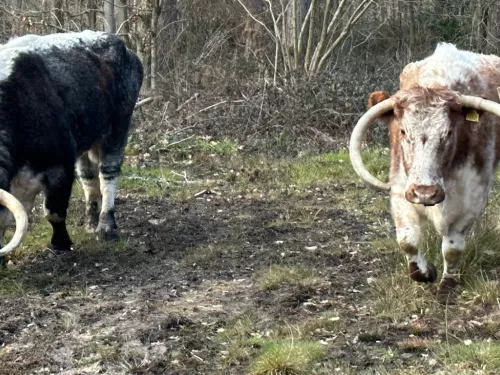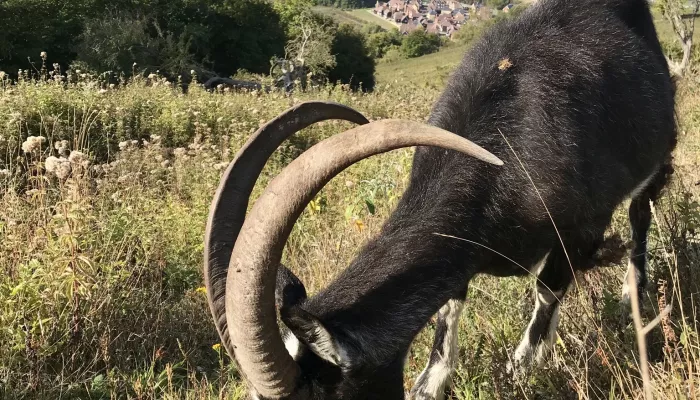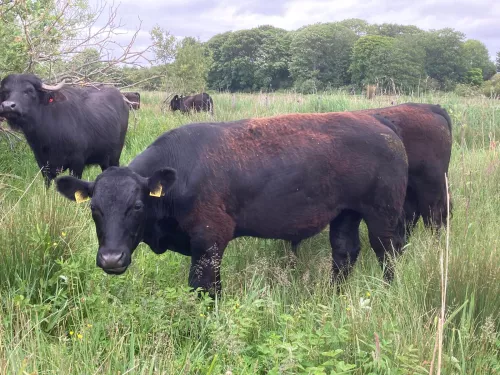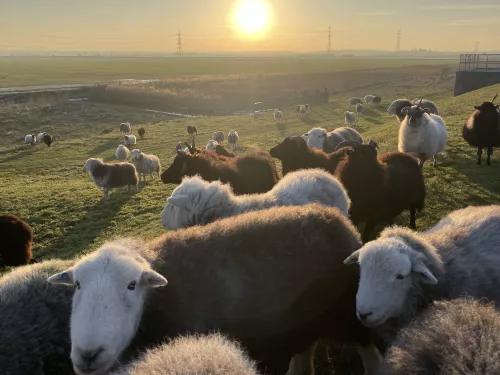
Longhorn cattle
Longhorn cattle can be many colours but they are almost always brindle (splattered/stripey) with a white line down the spine. They have long backs and can have very impressive horns.

Find out about our feral goats and why we use them in our Wilder Grazing strategy.
Coming in a wide range of sizes, colours and patterns, with an array of horn sizes and shapes, these goats are perhaps the ideal conservation animal.
Their field of clear vision is fairly narrow but wide. This means goats can see best when their heads are up, rather than down. This is why goats they prefer to browse (eat at head height), making them ideal for eating the woody vegetation and taller, more aggressive plants. They tend to ignore smaller, finer flowers that they would have to seek out and risk a predator sneaking up on them.
Goats don’t carry weight in the same place as sheep so they always look comparatively skinny, no matter how much they eat. They are very agile, climbing trees, quarry faces and rocky screes with ease. They can jump really well, often able to clear 6ft from a standing start. This is the main reason why they aren’t used more in conservation work. Keeping them on-site and off roads (and other places they shouldn’t be) is very tricky to achieve. Luckily goats have a special skill, they 'heft'.
Hefting means they become extremely loyal to one spot. Crofters used to have a sheltered side of a rocky outcrop or a cave where they would put food and water and protect their goats from predators. The goats would roam during the day but return to their ‘safe space’ regularly where the people could get milk from them. When you heft a goat to a central part of a big enough nature reserve, they won’t roam outside the boundaries. Unfortunately, it only takes an incident or two in their safe space for them to up and move somewhere else that might not be quite so good from a conservation point of view.

Longhorn cattle can be many colours but they are almost always brindle (splattered/stripey) with a white line down the spine. They have long backs and can have very impressive horns.

A result of Sussex and Angus parentage, these animals share the excellent temperaments of two breeds

Resident of the Cumbrian fells for hundreds of years, this hill breed is the backbone of our sheep flocks.